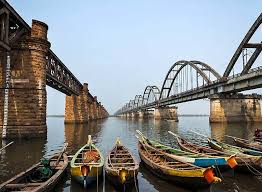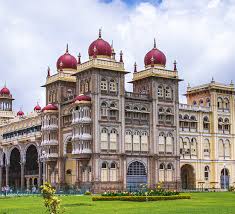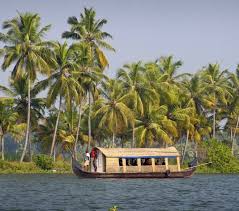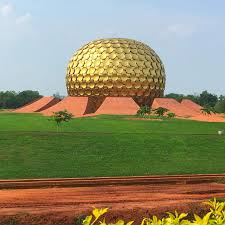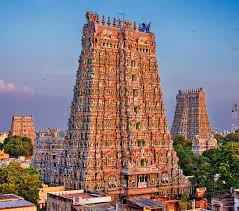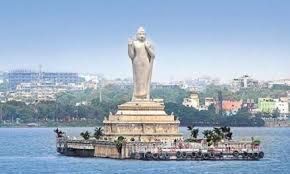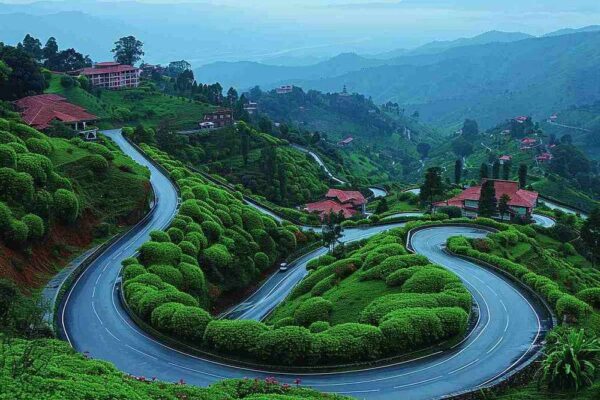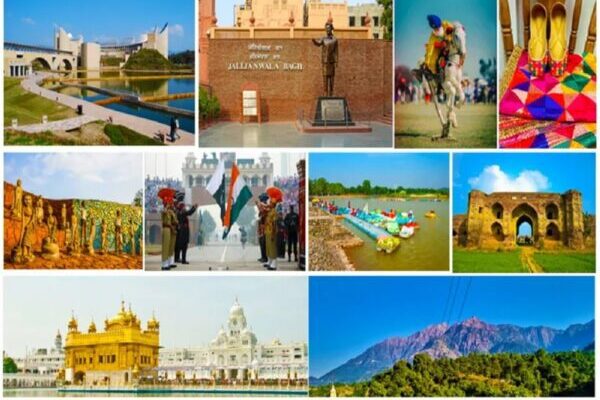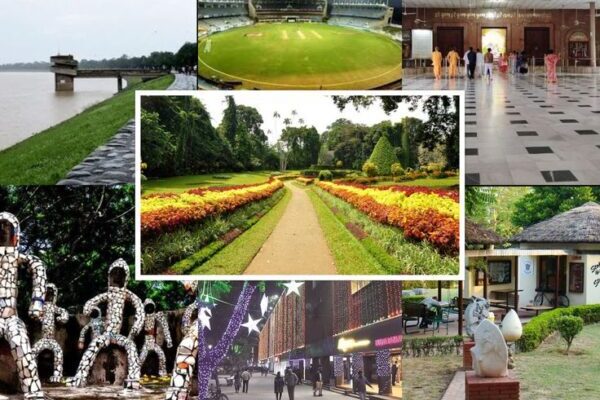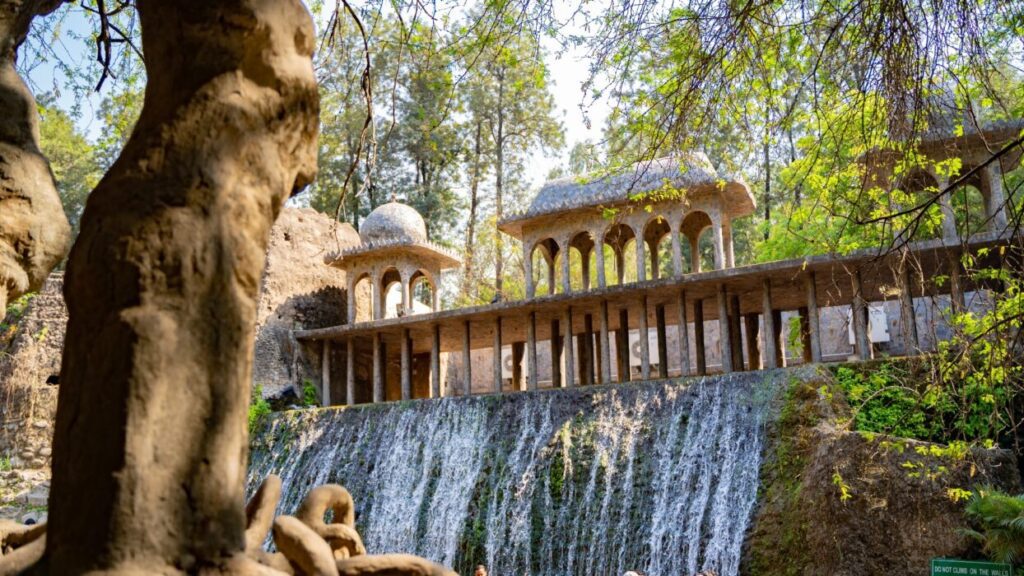05 Day(s) 04 Night(s)

South India
South India, also known as Southern India or Peninsular India, is a region with a rich and multifarious cultural legacy that is deeply Ingrained in history, tradition and Spirituality. It is surrounded by the Bay of Bengal in the east, the Indian Ocean in the south, and the Arabian Sea in the west, with the Narmada and Mahanadi rivers in the north.
The Southern region of India consists of the Indian states of Andhra Pradesh, Karnataka, Tamil Nadu, Kerala and Telangana, as well as the Union Territories of Lakshadweep in the Arabian Sea, and Puducherry.
The southern region of the nation was governed by numerous dynasties, including the Cholas, Pandyas, Cheras, Vijayanagara and Hoysalas. During their reigns, these dynasties built several forts, palaces, and temples.
A Quick Facts About North India:-
| Total States in Southern Region of India | 5 |
| Total Union Territory in Southern Region of India | 3 |
| Land Area in Southern Region of India | 635,780 Sq. Kms. |
| Largest State of Southern Region of India (in terms of Population) | Tamil Nadu |
| Largest State of Southern Region of India (in term of Area) | Karnataka (covering 191,791 Sq. Kms) |
| Largest City in Southern India | Bengaluru (formerly Bangalore) |
| Telangana Foundation Day | 2nd June 2014 |
| Popular Places of Tourist Interest in Southern Region of India | Beaches, Pilgrimage, Hill Stations, Heritage, Adventure, National Parks, Yoga & Ayurveda, Festivals and more |
From landscapes to heritage to culture and cuisine, South India is a cultural melting pot with an astonishing blend of richness and diversity.
The region’s cuisine is distinguished by its strong tastes, rice-based meals, and liberal use of curry leaves, coconut, and spices. Additionally, eating on a banana leaf with bare hands is the customary way to eat in South India. Dosa, Sambhar, Uttapam, Coconut, Fish, Biryani, Spicy Curries, and many more are well-known South Indian cuisine. The region is also well-known for its classical dances, including Kerala Natanam, Kathakali, Kuchipudi, Theyyam, Mohiniyattam, Bharatnatayam, and Ottamthullal. These dance forms are characterized by intricate footwork, elegant movement, vibrant costumes, and narrative storytelling.
South Indian art and craft are well-known for their elegance, meticulous workmanship, and strong temple traditions. Notable crafts include Kanchipuram silk sarees from Tamil Nadu, bidriware metal inlay from Karnataka, wooden toys from Andhra Pradesh, and Kerala’s coir and coconut crafts. The region also produces exquisite classical dance costumes, stone and bronze sculptures, and mural paintings. Furthermore, the tall rising monuments exhibit outstanding architectural and attractive designs. South India has two different forms of rock architecture – the Dravidian Style of Tamil Nadu and the Vesara style of Karnataka. The temples are often defended by a gopuram (gateways), with kalasam atop the central dome.
Hinduism is the predominant religion in South India, however Buddhism, Jainism, Christianity, and Islam are also present and practiced. The people of South India are called South Indians. Tamil, Kannada, Telugu, and Malayalam are some of the region’s major languages. Also, people are familiar with English.
South India is a thriving tourism destination that provides a wide range of experiences, from Kerala’s calm backwaters and lovely beaches to Karnataka’s architectural marvels, hill villages, and coffee plantations. Tamil Nadu is known for its magnificent Dravidian temples, whilst Andhra Pradesh and Telangana have spiritual places and ancient forts. In addition, the region boasts the coral islands of Lakshadweep and the French-influenced beauty of Puducherry. In terms of the IT sector, South India is a hot spot as well. Here, modernism and tradition coexist in a stunning way.
Tourists have a wide range of options for theme-based vacations in South India, such as nature, cultural & heritage sites, Backwater, beaches, wildlife attractions, religious sites, yoga and ayurveda, and more. Each type of vacation would be at its utmost glory during a specific time.
The inhabitants of South India celebrate their fair and festivals with great enthusiasm, displaying elaborate ceremonies, colorful caravans, dance routines, music and feasts. Pongal, Onam, Ugadi, Thrissur Pooram, Hampi Festival, Mysore dussehra and Tea and Tourism festival are Some of the prominent festivals of South India.
The southern region of India has four international airports which are situated at Cochin, Bengaluru (Bangalore), Chennai and Coimbatore. Domestic airports are located in metropolitan and major cities such as Puducherry (Pondicherry), Madurai, Mangalore, etc. The most convenient mode of transportation for traveling between South Indian cities is the trains. The majority of cities, towns, and villages are connected to one another by the railway. For those who want to indulge, the Golden Chariot’s Southern Splendour (Bangalore, Mysore, Goa) is a royally extravagant train trip across the south. This region is also well-connected by road, with well-paved state and district highways that connect it to all of the main states and cities. Travellers can easily reach their desired destinations through State-Run and Private buses, local taxis/cabs and personal vehicles. Many boats, jetty, and rafts are operated for the locals as the backwaters of Kerala become navigable. The government also runs a few ships to get to Lakshadweep.


TOUR PACKAGES OF SOUTH INDIA
FAQ
FAQ
Q: What is the best time to visit South India ?
A: The best time to visit North India depends on traveller and tourist preference for weather and activities.
| Months | Season | Best for |
| October to March | Winter | Kerala backwaters, Tamil Nadu temples, Pondicherry, Karnataka heritage sites (Hampi, Mysore), and Goa beaches |
| April to May | Summer | Escaping to the hills, tea plantations, and trekking |
| June to September | Monsoon | Kerala, Coorg, Wayanad, and other hill regions |
Q: How many days are needed to explore South India?
A: Exploring South India fully can take 3 to 4 weeks, as the region is vast with diverse states, cultures, and landscapes. A 7–10 day trip is ideal for experiencing the highlights of a single state or two neighboring ones, such as Kerala’s backwaters, Tamil Nadu’s temples, Karnataka’s heritage sites, and a hill station. For a more relaxed pace, 2 weeks strike the right balance between nature, history, and beaches. Ultimately, the duration depends on whether you seek a quick overview or a deeper journey.
Q: What makes South India beautiful?
A: South India is beautiful for its verdant landscapes, tranquil backwaters, unspoiled beaches, and mist-covered hill stations. Its magnificent temples, historic landmarks, and rich cultural heritage add to its allure. The region with a perfect harmony of nature, tradition, and warm hospitality makes it truly captivating.
Q: What are the must visit destinations in South India?
A: The Must visit destinations in South India include Kerala’s serene backwater and Munnar hills, Coorg and Mysore in Karnataka, Mahabalipuram and Meenakshi Temple in Tamil Nadu, the historical ruins of Hampi, the colonial elegance of Pondicherry and the scenic beaches of Gokarna, Kovalam and Varkala.
Q: What are the best places to visit during the winter in South India?
A: The best places to visit in South India during the winter include hill stations like Ooty, Munnar, Coorg, and Kodaikanal for their cool weather and misty charm. Nature lovers can head to Wayanad and Thekkady for wildlife experiences, while coastal gems like Pondicherry and Alleppey offer pleasant weather, festive vibes, and serene backwaters. Historical sites such as Hampi and cultural hubs like Chennai also offer a great winter experience.
Q: What are the best places to visit during the summer in South India?
A: The best places to visit during the summer in South India are hill stations such as Ooty, Coorg, Munnar, Wayanad, and Kodaikanal for their cool weather, lush greenery and misty valleys. Travelers can also experience the tranquil backwaters of Alleppey or immerse themselves in the lush green forests of Thekkady and Idukki.
Q: What are the best places to visit during the monsoon in South India?
A: The best places to visit during the monsoon in South India are Munnar, Coorg, Wayanad and Chikmagalur (Karnataka) for their tea estate, coffee plantations and cascading waterfalls. Travelers can also explore the scenic beaches and historic forts of Gokarana and Kasargod inKarnataka for a unique coastal experience.
Q: Which are the most crowded cities in South India?
A: Bengaluru, Chennai and Hyderabad are the most crowded cities in South India.
Q: What are the most visited tourist attractions in South India?
A: Some of the most visited tourist attractions in South India are:
- Kerala’s Backwaters and Alleppey Houseboats
- Meenakshi Amman Temple (Madurai, Tamil Nadu)
- Hampi (UNESCO World Heritage Site, Karnataka)
- Mysore Palace (Karnataka)
- Mahabalipuram Shore Temples (Tamil Nadu)
- Ooty & Munnar Hill Stations
- Charminar and Golconda Fort (Hyderabad, Telangana)
- Pondicherry’s French Quarter & Beaches
Q: What are some popular activities to do in South India?
A: Some popular activities travellers and tourist can do in South India are:
- Backwater Houseboat Cruise in Kerala
- Trekking in Coorg, Munnar and Wayanad
- Wildlife Safaris in Periyar, Bandipur and Nagarhole
- Temple tours in Tamil Nadu
- Beach hopping in Gokarna, Varkala and Puducherry (Pondicherry)
- Explore Colonial Heritage
- Ayurvedic Treatments
- Savouring authentic South Indian Cuisine
- Experience local festivals
Q: Which is the best wildlife destination to explore in South India?
A: Periyar Wildlife Sanctuary in Kerala is one of the finest wildlife destinations in South India, famed for its elephants, boat safaris, and rich biodiversity. Other excellent choices are Bandipur and Nagarhole National Parks in Karnataka for spotting tigers, and Mudumalai National Park (a UNESCO site) in Tamil Nadu for a wide variety of wildlife. Each of these reserves promises a unique and thrilling experience for nature and adventure enthusiasts.
Q: What are some popular historical sites in South India?
A: Some of the popular historical sites in South India are the UNESCO listed Hampi Temple and monuments in Karnataka, Mahabalipuram in Tamil Nadu, the Meenakshi temple in Madurai, Mysore Palace and Badami Caves in Karnataka.
Q: What are the famous hill stations in South India?
A: The famous hill stations in South India are Coorg and Chikmagalur in Karnataka, Munnar and Wayanad in Kerala, Ooty and Kodaikanal in Tamil Nadu, and Araku Valley in Andhra Pradesh.
Q: What are famous beaches in South India?
A: Some of the famous beaches in South India are Gokarna in Karnataka, Marina Beach in Chennai, Varkala and Kovalam in Kerala, and Pondicherry’s Promenade Beach.
Q: Are there any hidden gems or offbeat destinations in South India?
A: South India is home to several hidden gems and offbeat destinations that go beyond the usual tourist trails. Some of these lesser-known treasures include:
- Gandikota (Andhra Pradesh) – Popularly called the “Grand Canyon of India”.
- Araku Valley (Andhra Pradesh) – Famous for coffee plantations and vibrant tribal culture.
- Meghamalai (Tamil Nadu) – A pristine, high-altitude escape untouched by crowds.
- Kotagiri (Tamil Nadu) – A peaceful alternative to Ooty and Coonoor, offering scenic treks, tea gardens, and a cool climate.
- Dhanushkodi (Tamil Nadu) – A remote spot where different seas meet, with an intriguing, desolate charm.
- Yercaud (Tamil Nadu) – Known for its coffee estates, serene lake, and panoramic viewpoints.
- Varkala (Kerala) – Unique for its stunning beaches set against dramatic cliffs.
- Vagamon (Kerala) – A misty haven with rolling meadows and pine forests.
- Karkala (Karnataka) – Steeped in history, dotted with temples and monolithic statues.
- Agumbe (Karnataka) – A rainforest paradise, perfect for jungle experiences and solitude.
Q: What are some of the most popular tourist circuits in South India?
A: Here are some of the most diverse and well-loved tourist circuits in South India:
- Backwater and Beach Circuit (Kochi-Alleppey- Kumarakom-Kollam-Varkala-Kovalam-Trivandrum)
- Spiritual Circuit (Hyderabad-Srisailam-Tirupati-Kanchipuram-Thanjavur-Madurai-Palani-Guruvayoor)
- Temple and Heritage Circuit (Chennai-Mahabalipuram-Kanchipuram-Thanjavur-Trichy-Madurai-Rameswaram-kanyakumari)
- Hill Station and Wildlife Circuit (Bengaluru-Mysuru-Coorg-Wayanad-Ooty-Kodaikanal-Munnar-Thekkady)
- Coastal Karnataka and Kerala Circuit (Gokarna-Murudeshwar-Udapi-Mangalore-Bekal)
- Heritage and Hampi Circuit (Bengalury-Mysuru-Srirangapatna-Hassan-Belur-Halebidu-Hampi-Badami-Pattadakal-Aihole)
- Western Ghats Nature Circuit (Munnar-Wayanad-Coorg-Chikmagalur-Agumbe-Kudremukh)
- Royal Heritage, Hill Stations and Backwater (Bengaluru-Mysuru-Ooty-Munnar-Alleppey-Kochi
Q: Are there any UNESCO World Heritage Sites situated in South India?
A: Yes, South India has multiple UNESCO World Heritage Sites, both cultural and natural. Here are some of the most prominent ones:
- Great Living Chola Temples, Tamil Nadu
- Monuments in Hampi, Karnataka
- Group of Monuments at Pattadakal, Karnataka
- Group of Monuments at Mahabalipuram, Tamil Nadu
- Sacred Ensembles of the Hoysalas, Karnataka
- Nilgiri Mountain Railway, Tamil Nadu
- Gingee Fort, Tamil Nadu
- Western Ghats of Karnataka and Kerala
- Kakatiya Rudreshwara (Ramappa) Temple, Telangana
Q: What are popular things to buy in South India?
A: South India is a shopper’s delight; from traditional handlooms and handicrafts to spices and jewelry, each state has its specialty. Here are some of the most popular things to buy when visiting:
- Handwoven silk sarees from Kanchipuram and Mysuru
South Indian spices - Mysuru sandalwood products
- Coffee and honey from Coorg
- Kathakali masks from Kerala
- Tanjore paintings
- Pochampally ikat textiles
- Kalamkari fabric from Andhra Pradesh
- Aroma Oils and ayurveda products
- Pearls from Hyderabad
- Handwoven silk sarees from Kanchipuram and Mysuru
Q: Which South Indian cuisine should travellers and tourists try?
A: Travellers to South India should try the region’s diverse cuisines. Tamil Nadu serves dosas, idlis, and spicy Chettinad curries with filter coffee. Kerala tempts food lovers with its traditional Sadya, appam with stew, and flavorful seafood. Karnataka delights with Mysore masala dosa, bisi bele bath, and Mangalorean coastal dishes, while Andhra Pradesh and Telangana serve fiery dishes like gongura pachadi and the famous Hyderabadi biryani.
Q: Are there vegetarian and vegan options available in South India?
A: Yes, South India is one of the best regions for vegetarian and vegan food. Traditional staples like idli, dosa, vada, sambar, rasam, and wholesome thalis are easy to find everywhere. Many dishes are naturally vegan, made with rice, lentils, coconut, and spices. By simply requesting meals without ghee, curd, or milk, travelers can enjoy a wide variety of vegan-friendly options.
Q: Is South India Safe for solo travellers including women?
A: Yes, South India is considered a safe region for solo travellers, including women, but it requires awareness and follows standard safety precautions. Major cities and tourist destinations are well-connected and welcoming, though basic precautions like avoiding deserted areas at night and dressing modestly are recommended. Using recognized transportation and staying in reputable accommodations further ensures a comfortable and secure experience.
Q: What should travellers pack for a trip to South India?
A: Travellers visiting South India should pack carefully, keeping comfort, the climate, and local cultural norms in mind.
- Clothing:
- Light and breathable clothes
- Light Jacket
- Shawl or Scarf
- Footwear:
- Comfortable sandals or Flip-flop
- Sun Protection:
- Sunglasses
- Sunscreen
- Hat/ Caps
- Health and Hygiene:
- Personal medication
- Personal care products
- Hand Sanitizer
- Mosquito repellent
- Electronics:
- Power Bank
- Travel adapter
- Camera
- Travel Documents and Money:
- Passport and Visa
- ID Copies
- Travel Insurance
- Local Currency
- Other important documents
- Miscellaneous:
- Reusable water bottle
- Raincoat and Umbrella
- Reusable shopping bags
- Clothing:
Q: Is it easy to get around South India cities using public transport?
A: Yes, navigating South Indian cities is quite simple because of various public transportation alternatives. Most cities have buses, auto-rickshaws, and taxis, while larger metropolitan areas such as Chennai, Bengaluru, Hyderabad, and Kochi also have metro and suburban rail networks. Popular ride-hailing apps such as Ola and Uber further make getting around convenient for tourists.
Q: What should travellers and tourists wear when visiting temples and religious sites of South India?
A: When travellers visiting temples and religious sites in South India should dress conservatively and respectfully. Men are often expected to wear dhotis or simple trousers with shirts, while women typically wear sarees, salwar kameez, or long skirts that cover the shoulders. Footwear must be removed before entering, and since certain temples have strict dress codes, carrying a shawl or scarf is advisable.
Q: Is WiFi readily available in South India?
A: Yes, WiFi is commonly accessible in South India, particularly at hotels, cafes, airports, and popular tourist spots. In addition, most cities have strong mobile data networks, allowing travellers to stay connected with ease while on the move.
Q: Can travellers and tourists easily get a local SIM card in South India?
A: Yes, travellers and tourists may conveniently obtain a local SIM card in South India by presenting a copy of their passport, visa, and passport-size photo at major airports or authorized telecom providers for verification. Leading providers such as Jio, Airtel and Vi offer affordable prepared plans with reliable data coverage and activation usually takes a few hours to a day.
Q: Where can travellers and tourists exchange currency in South India?
A: In South India, travellers can exchange currency at airports, banks, licensed currency exchange centers in major cities. Many hotels also offer limited exchange services, though the rates may not be the best. Additionally, ATMs widely accept international cards, offering a convenient option to withdraw local currency.
Q: Where can travellers and tourists find ATMs in South India?
A: ATMs can be found throughout South India, from major cities to smaller towns and villages. They are generally located near banks, shopping centers, airports, railway stations, and popular tourist spots. Most ATMs accept international cards, making it convenient for travellers to withdraw local currency at any time.
Q: Are credit cards widely accepted in South India?
A: Yes, credit cards are commonly accepted in South India, particularly at hotels, restaurants, shopping centers, and popular tourist sites. However, smaller stores, local markets, and rural areas often only accept cash. Travellers are therefore advised to carry some cash, especially when exploring more remote locations.
Q: What cultural customs should travellers and tourists know before travelling to South India?
A: Travellers visiting South India should be aware of local cultural customs to ensure respectful and smooth interactions:
- Greetings and general etiquette: Use “Namaste” as a traditional greeting, and always use your right hand when eating or handing things to others, as the left is considered unclean. Public displays of affection should be avoided and reverence should be shown during religious rituals or ceremonies.
- Respect for places of worship: Dress modestly, especially when visiting religious sites, remove your shoes and cover your heads. Be mindful that photography may be restricted in certain holy places.
- Respect for local traditions: Be respectful of cultural customs and always get permission before photographing individuals or religious sites.
Q: Can travellers and tourists include a wellness retreat in their South India tour?
A: Travellers can certainly include a wellness retreat in their South India tour. Kerala is especially renowned for its Ayurveda centers, yoga retreats, and spa resorts offering massages, therapies, and comprehensive wellness programs. Set in peaceful surroundings, these retreats provide a refreshing and restorative experience alongside cultural and sightseeing opportunities.

